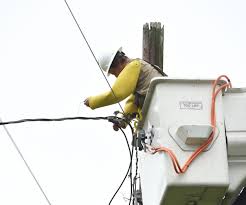Entergy New Orleans: Load-Shed Order Causes Major Citywide Power Outage
Primary Keywords: Entergy New Orleans outage, load-shedding New Orleans, citywide blackout 2025
Secondary Keywords: New Orleans power outage, Entergy load-shedding order, MISO power grid, Entergy news update
In a significant event impacting thousands of residents, Entergy New Orleans confirmed that a load-shedding order was responsible for the citywide power outage that hit New Orleans on [insert date]. The blackout, which affected key residential and commercial zones, was part of an emergency measure to protect the regional power grid from a potential collapse.
This article explores what happened, why it happened, which areas were affected, and what Entergy plans to do moving forward.
What Caused the New Orleans Power Outage?
Load-Shedding: An Emergency Protocol
A load-shed event occurs when power demand exceeds supply, and electricity providers are forced to cut power temporarily to balance the grid. The Midcontinent Independent System Operator (MISO) issued the emergency directive, which Entergy New Orleans complied with to prevent a broader, long-term grid failure.
“This action was necessary to maintain the integrity of the power system and avoid a total blackout,” said an Entergy spokesperson.
Areas Affected by the Outage
The Entergy New Orleans outage impacted power in several neighborhoods for 45 minutes to 3+ hours. Some of the hardest-hit areas included:
Central Business District (CBD)
Uptown New Orleans
Mid-City
Gentilly
Algiers
New Orleans East
Parts of Jefferson Parish
Hospitals and critical services operated on backup systems, while traffic signals, streetlights, and homes were left in the dark.
Why Did Load Shedding Happen?
There were several contributing factors:
High electricity demand due to extreme heat
Reduced generation capacity from regional suppliers
Grid vulnerability during peak hours
Limited renewable energy buffer during off-peak production
Public Reaction & Concerns
The lack of advance warning caused widespread confusion. Local officials and residents raised serious questions about transparency, preparedness, and customer communication.
Top Concerns from Residents:
No real-time outage alerts
Medical equipment failure risks
Food spoilage & electronics damage
Traffic chaos and public safety worries
What Is Entergy Doing About It?
Entergy New Orleans has stated it is taking the following actions:
Improving real-time notification systems
Working with MISO to avoid future last-minute load-shedding
Upgrading grid resilience and backup capabilities
Engaging with city officials for a public review hearing
FAQ: Entergy New Orleans Load-Shedding Explained
Q1: Who issued the load-shed order?
A: The order was issued by MISO (Midcontinent Independent System Operator), a regional grid management body. Entergy was required to comply.
Q2: Could this happen again?
A: Yes, especially during periods of high demand and extreme weather. However, Entergy and regulators are working to minimize future disruptions.
Q3: How can residents stay informed?
A: Sign up for Entergy text/email alerts, follow local news, and monitor MISO grid conditions during high-demand periods.
Long-Term Solutions: What Needs to Change
This blackout exposed critical weaknesses in the city’s energy management systems. To prevent future crises, New Orleans must:
Invest in grid modernization
Enhance local energy storage
Expand renewable sources
Establish better communication channels with residents
Final Thoughts
The recent Entergy New Orleans power outage is a stark reminder of how delicate our energy systems have become. While the load-shed order avoided a larger disaster, the lack of preparation and communication left many feeling vulnerable.
As climate events intensify and cities grow, energy resilience will be as important as energy access. New Orleans must now focus on modernizing its power grid, improving emergency alert systems, and putting people first in energy policy planning.
